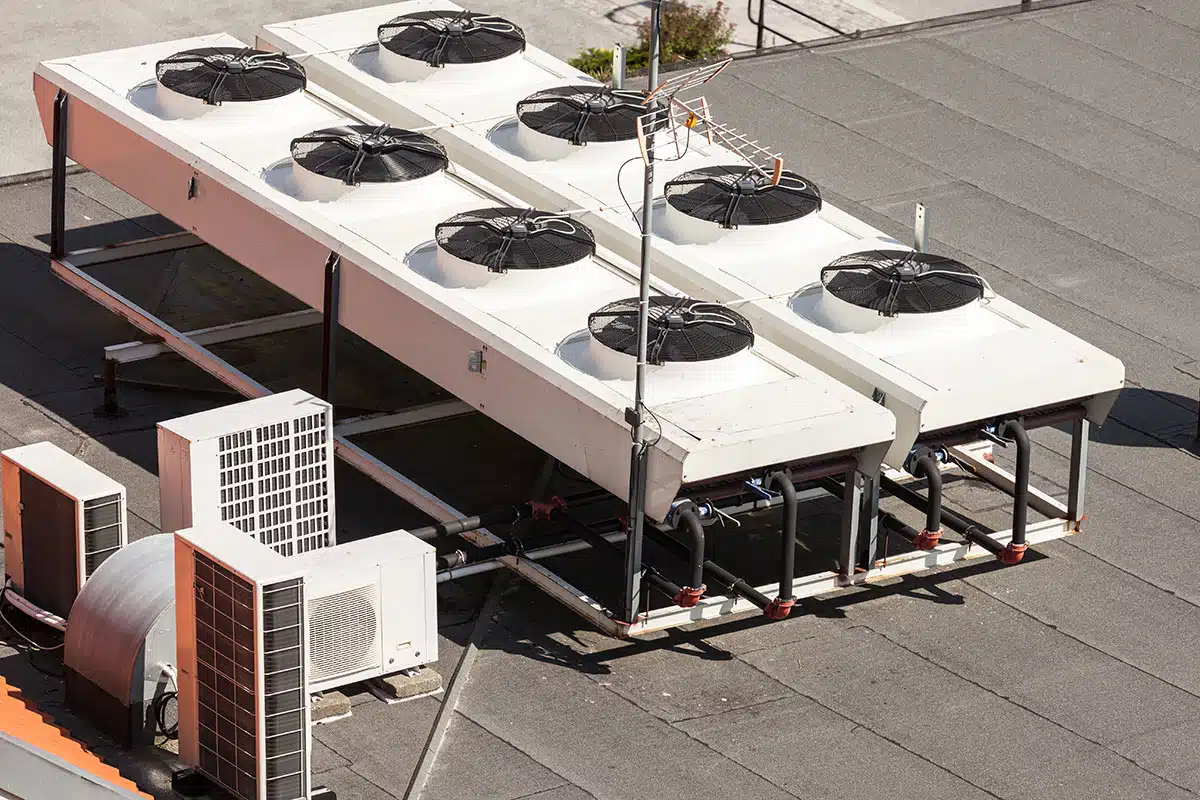“Our state is on track to lose 10% of its water supply by 2040.” So said California Governor Gavin Newsom in a speech announcing incentives to encourage the replacement of water-thirsty lawns with drought-tolerant landscaping. And California is not alone. One state over, the Nevada Legislature recently enacted a law prohibiting the use of irrigation for non-functional (i.e., purely ornamental) grass at commercial properties.
States are getting serious about water-wise landscaping and are making efforts to ensure outdoor spaces are more sustainable. This is apparent not only from the laws they’re passing, but also the cash rebates that many municipalities are offering to encourage owners and managers to transition their grounds to drought-tolerant landscaping.
These rebates are just one of the many benefits of switching to eco-friendly grounds. Water conservation and reduced maintenance costs are two other plusses. To reap these benefits and make the most of sustainable grounds and landscapes, building owners and managers should keep the following methods and tools—and rebates—in mind.
Drought Tolerant Landscaping: It’s Not Turf
According to the Nevada Water Authority, approximately 825,000 gallons of water per year can be saved for every 15,000 square feet of land converted to water-smart landscaping.
Grass and lawns are the most water thirsty of landscaped areas. In fact, according to the Nevada Water Authority, approximately 825,000 gallons of water per year can be saved for every 15,000 square feet of land converted to water-smart landscaping. That’s a lot of water—and money—saved.
One way to create water-smart landscapes is to replace turf with xeriscape, terrain that requires little or no irrigation and is typically comprised of native and adaptive plants. These plants and shrubs naturally thrive in dry conditions. They’re also more resilient and can be as aesthetically pleasing as more water-thirsty options. Planting native or adapted plant species that are well-suited to the local climate also reduces the need for mowing, chemical applications, and other types of maintenance.
According to the Pacific Institute, commercial property managers can reduce landscape water use by 70% to 80% just by replacing turf with efficiently irrigated, climate-appropriate plants. Here are a few of the rebates available for turf replacement:
- Southern Nevada Water Authority has a turf rebate program that offers rebates for businesses, HOAs, and multifamily properties. The rebate is $3 per square foot of grass that’s removed and replaced with desert landscaping and is available for up to 10,000 square feet of landscape per fiscal year.
- Southern California’s West Basin Municipal Water District is offering rebates starting at $4 per square foot to remove non-essential grass on public properties in their service area. This offer includes free professional advice to help design new, water-wise landscapes. Any federal, state, or city property in the district’s area may qualify for rebates on parcels that range from 250 square feet to 200,00 square feet, with a maximum rebate value of $800,000.
- The City of Sacramento offers Turf Conversion Rebates where you can convert to drought-tolerant landscaping and receive up to $1.50 per square foot of replaced turf (up to $50,000).
Smart Irrigation, Smart Savings
The first lawn sprinkler was patented in 1871, and it proved revolutionary in cementing the popularity of grass lawns—despite its inefficient design. Since then, the humble sprinkler has undergone several improvements, including the oscillating sprinkler in 1948 and the introduction of time-based controls in the 1960s. Yet studies show that despite these advancements, as much as 50% of the water used by modern sprinklers is wasted through overwatering. But new advances in sprinkler technology are changing that.
Smart irrigation controllers are among these game-changing technologies. Far more effective than time-based control, smart irrigation controllers optimize water use by employing advanced technology and data analysis. They consider factors such as weather conditions, soil moisture levels, and plant water requirements to ensure precise and efficient irrigation. Most smart irrigation controllers are either weather based or soil moisture based. Both types can tailor watering schedules and run times for a sprinkler or drip system.
Weather-based controllers use various signal technologies to gather temperature, humidity, and even solar radiation readings (typically from a local weather station). The controllers use this data to automatically adjust irrigation schedules, ensuring the landscape receives the optimal amount of water for the current climate conditions.

Soil moisture-based controllers, on the other hand, take a more direct approach. These controllers utilize soil moisture sensors, placed underground, to gather data from the root zone of plants. The sensors estimate the soil volumetric water content—the portion of the total volume of soil occupied by water—and adjust watering accordingly.
The water-saving potential of these smart irrigation controllers and sensors is substantial, as was powerfully demonstrated by an EPA study of an office complex in Plano, Texas. The owners of the complex installed a weather-based irrigation controller, along with rain and freeze sensors. In addition, they committed to regular maintenance and repair work. The EPA study found that after these changes, the complex reduced its water use by 12.5 million gallons of water in the first year alone, for a savings of $47,000. The upgrades paid for themselves in only 1.5 years.
Currently there are multiple local and regional agencies offering rebates on both weather-based and soil moisture-based irrigation controllers, including these water districts:
- In Utah, the Washington County Water Conservancy District has a $75 rebate for irrigation smart controllers.
- The Santa Clara Water District offers up to $50 for rain sensors and between $300 and $2000 (depending on the number of stations) for weather-based irrigation controllers.
- The Metropolitan Water District of Southern California offers rebates of $35 per station for irrigation soil sensors and weather sensors as part of its Water$mart program. This program covers parts of Los Angeles, Orange, San Diego, Riverside, Ventura, and San Bernardino counties.
- In Texas, the Water Wise Austin program offers rebates of $300 each for flow sensors, electronic devices that measure and regulate the flow rate of water within pipes, a critical technology for conservation. The program also covers 50% of the equipment cost, per station, for central computer irrigation controller systems, up to $10,000.
Irrigation Drip Systems
While most sprinkler systems could benefit from an upgrade, one approach to watering has long been known to be highly efficient: drip irrigation. This type of irrigation, which has existed for decades in one form or another, exceeds 90% efficiency, making it an effective, well-established technology for reducing overall water use. Drip systems are especially effective for sloped areas, due to the slow rate of water application. In these instances, the water soaks in instead of running off, avoiding soil erosion and water waste.
Although, just like sprinklers, drip systems do need monitoring and maintenance (to ensure they don’t become clogged or spring leaks), they offer other advantages in addition to cost savings:

- Soil Moisture Retention: By providing water directly to the root zone, drip irrigation helps maintain consistent soil moisture levels, preventing excessive drying or waterlogging. Maintaining optimal soil moisture levels in this way contributes to the resilience of plants during drought conditions.
- Weed Control: Another advantage of drip irrigation systems is that they enable highly targeted watering, which works to starve weeds of water and cuts back on their growth. This in turn reduces maintenance costs.
- Preventing Foliar Diseases: Overhead irrigation methods can lead to moisture accumulation on plant foliage, creating a favorable environment for the development of fungal diseases. Drip systems prevent excessive moisture on leaves, reducing the risk of foliar diseases and promoting healthier plants.
- Landscape Design Flexibility: Inline drip systems offer flexibility in landscape design and installation. The tubing can be easily laid out in various patterns, allowing precise customization for different plant types, spacing, and landscape configurations.
We found these municipalities offering rebates on drip systems that may suit your landscape:
- Municipal Water District of Orange County (MWDOC) offers rebates for businesses to convert areas irrigated by spray heads to drip irrigation. Rebates are at $0.50 per square foot of converted area, with a maximum of 50,000 square feet for each qualified customer.
- Cal Water Conservation Rebate program offers $0.50 per square foot of landscape for spray-to-drip irrigation conversion for multi-family residential and non-residential customers; the maximum rebate is $5,000 for converting 10,000 square feet of landscape.
- SVC Water is offering commercial customers in the Santa Clarita area $0.75 per square foot for spray-to-drip conversions.
Reap the Benefits of Drought-Tolerant Landscaping
No matter the size of a company’s landscaped terrain, customers and tenants appreciate organizations that embrace sustainability. This means that in following water-wise landscaping practices, companies not only lower their water and maintenance costs, they also please their customer base and burnish their corporate image.


